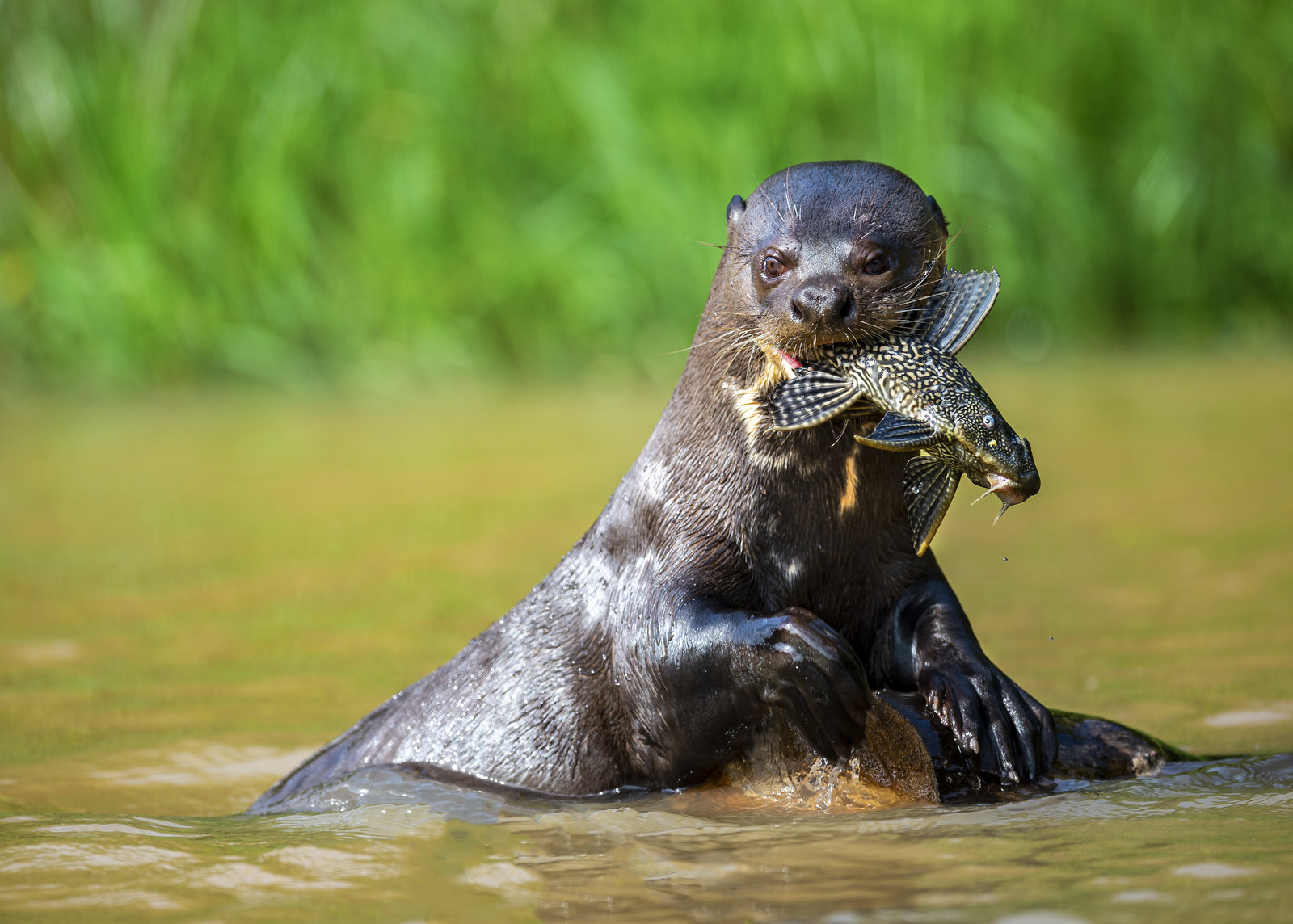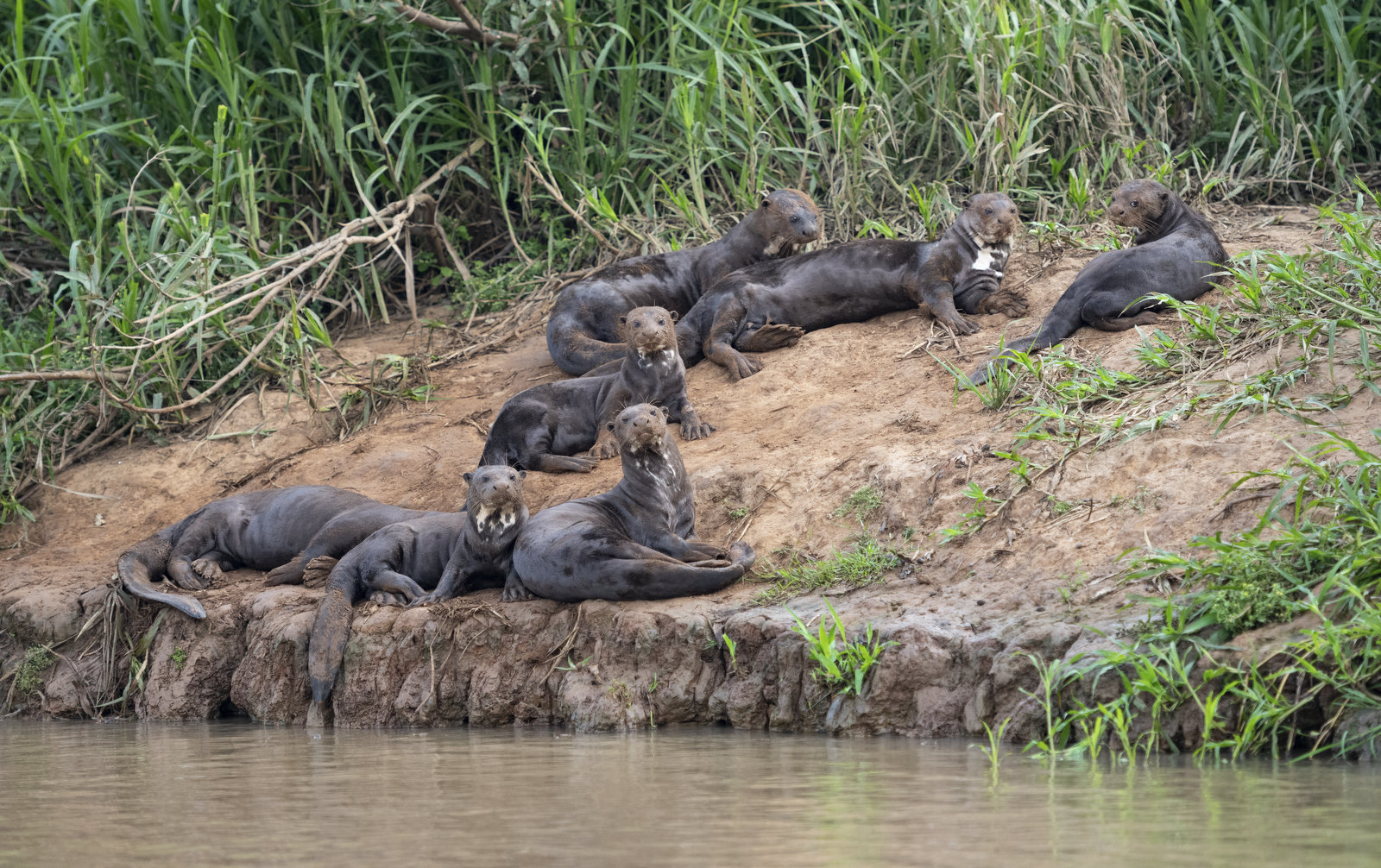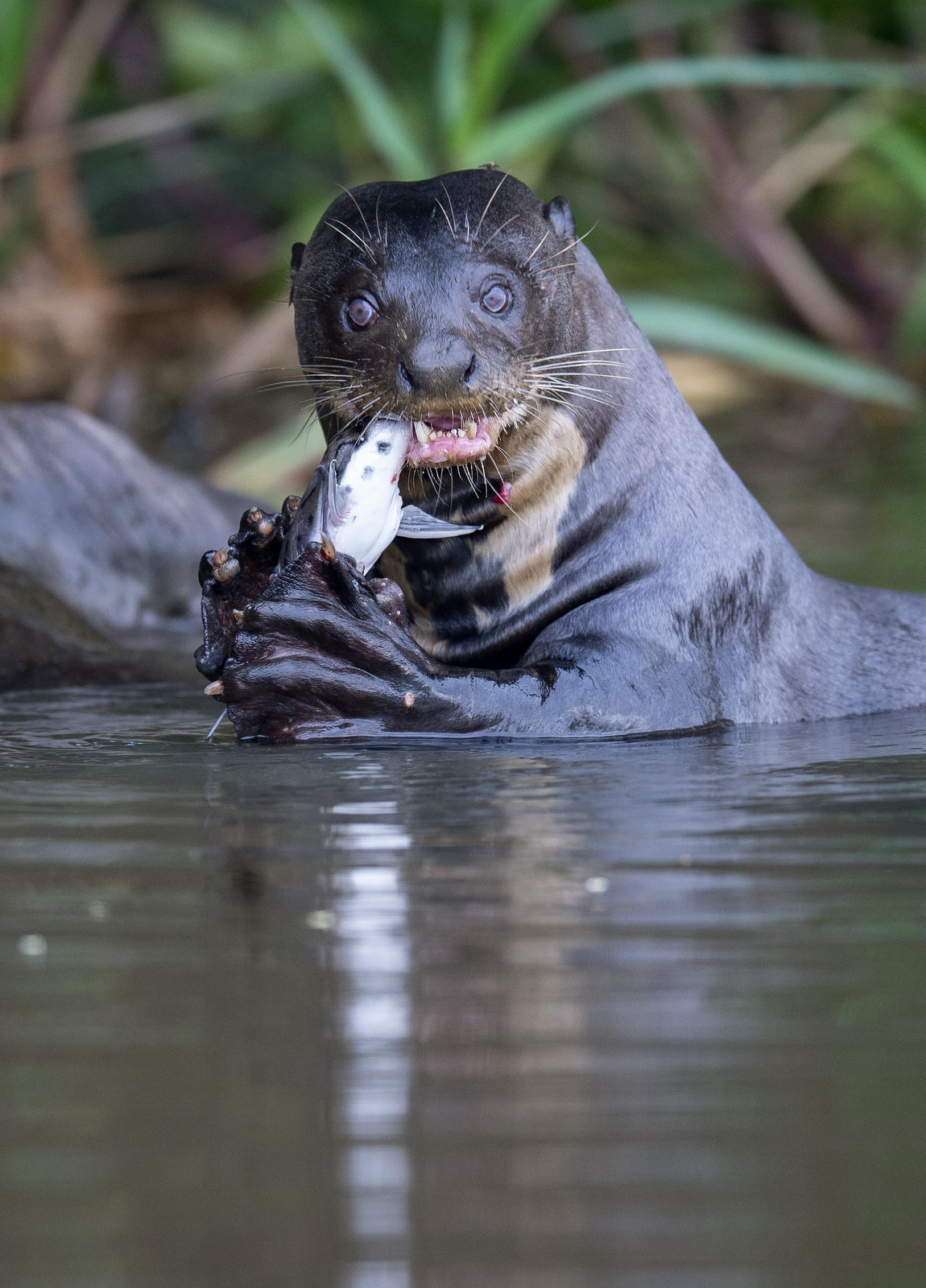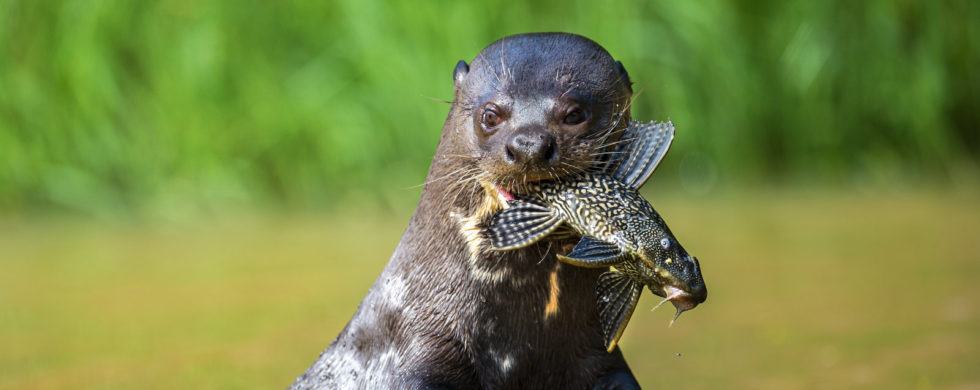
31
2020River Wolf
Shot of the Month – December 2020
I am on record as being a big fan of otters. When I think of “otters” I think of a collection of rambunctious weasels with an endless appetite for fun and group cuddles. Otters are C-U-T-E. Surely you recall this epic video that was all the rage a few years ago (23 million views and counting…).
There are 13 species of otters around the world and many are about two to three feet in length. And generally adorable. Mother Nature decided to supersize one of the three species found in South America and the result was the aptly named, Giant Otter. The Giant Otter (GO) can reach six feet in length and can weigh up to 70 pounds. They are also rather terrifying.
Pop culture analogy: Most otters are to Mogwai (Gizmo) as the Giant Otter is to Gremlin (Stripe). A bit rusty on your Gremlin folklore? You can find a refresher here, and also here on the breakout 1984 film.
Most Otters Giant Otters
I realize that this may seem a bit harsh, but your honor, I would like to submit People’s exhibit ‘A’ into evidence.
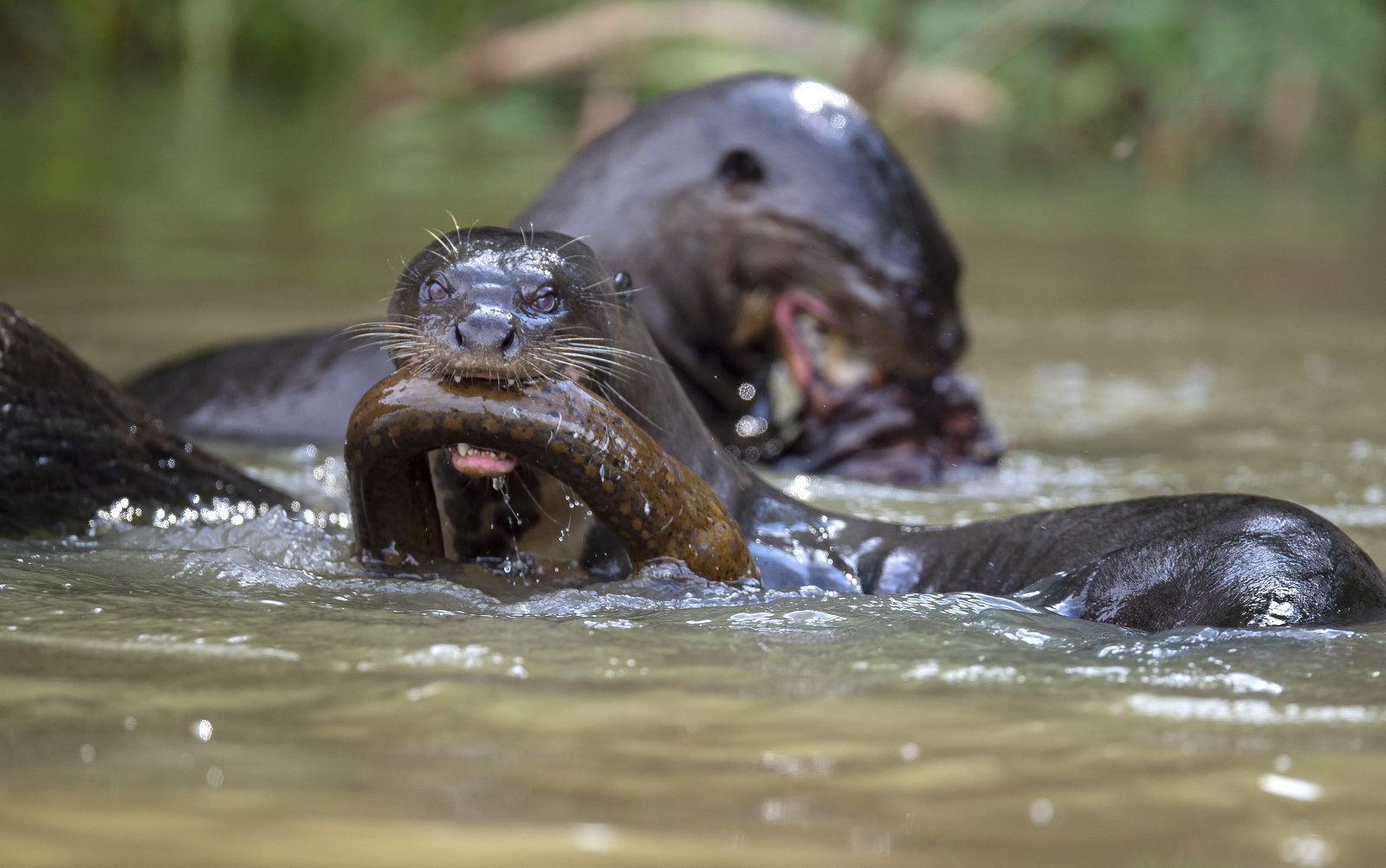 Wow, that is a heck of a menacing glare. The Giant Otter is thrashing an eel that he just caught.
Wow, that is a heck of a menacing glare. The Giant Otter is thrashing an eel that he just caught.
Like most otters, the Giant Otter lives and moves about the waterways in a family group as big as 20 strong though the average group size is four to eight. Below is an image I captured of a family resting on a river bank:
In the water giant otters are fearless and will attack ANY creature that poses a threat. In this video, a family attacks and kills a caiman (similar to a crocodile). I present Exhibit B for the court demonstrating the scariness of the GO.
Those shrieks, gurgles, and whines are the fodder for many a nightmare.
And for Exhibit C as to how gangster Giant Otters are, I submit my own testimony. One day while on a boat in the Pantanal, I saw a male jaguar wading through the water near the river’s bank. This is a common hunting technique as the jaguar looks for unsuspecting prey, whether it be caiman, capybara, or even fish in the river. In the other direction, we saw a lone giant otter swimming along the bank on a direct collision course with the jaguar. I got my camera ready as I imagined I was about to photograph a jaguar killing a giant otter. To my surprise, once the jaguar saw the otter he instantly jumped out of the river on the bank. He wanted NOTHING to do with that otter. I imagine if he realized that the otter was by himself he would have tried to stalk it, but he didn’t stick around long enough to find out. Even the mighty jaguar will not take on a group of giant otters in the water. Here you can see a family of giant otters scare off a young jaguar:
The jaguar holds the crown as the top apex predator in South America as a lone giant otter is no match for the 200-pound cat. However, once mobilized a family of giant otters has no rival. Locally the otter is known as “Water Wolf” or “River Wolf.” In Brazil, the giant otter is called ariranha which means “Water Jaguar” in the local Tupi language. Giant Otters primarily feed on fish, as shown in my original photo but they also dine on crabs, turtles, snakes, and small(ish) caiman.
And finally, with this image, Exhibit D. When these guys got supersized they became rather gargoyle-esque in their look. Try not to look at those googly eyes….and those webbed claws……eeek.
Despite their ferocious look and ruthless approach to outsiders, giant otters are affectionate with each other and the entire family is responsible for raising and protecting the pups. I recommend admiring the largest member of the otter family from a distance because if one happens to get too close, make no mistake, these river wolves will cut a b*&#h.
Until next month….michael
Sources:
International Otter Survival Fund
Nikon D4S, Nikon 600mm, f/4, 1/1000 sec, ISO 180,

